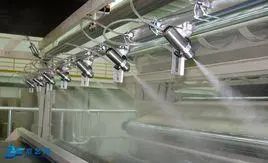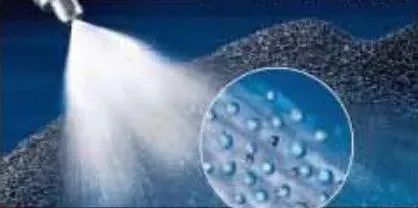New Technology of Cutting Fluid Supply, Purification and Recovery
September 26, 2022
In the cutting process, the cutting fluid must be used reasonably. The use effect of cutting fluid is not only related to the correct selection of the type and grade of cutting fluid, but also to its supply and purification method. Correct supply and purification treatment can not only improve the use effect of cutting fluid, but also reduce the roughness of the workpiece surface, improve the machining accuracy of the workpiece, and prolong the service life of the tool. The used waste cutting fluid contains a large amount of mineral oil and surfactant (emulsifier). In the past, due to insufficient understanding of its hazards, direct discharge was adopted. With the rapid development of industry, the discharge of this oily sewage is increasing day by day. According to incomplete statistics, the daily discharge of waste cutting fluid from the machinery industry alone in mainland China has reached more than 200 million tons. The environmental pollution caused by oily sewage is becoming more and more serious, ranging from rivers to small streams. In addition, the surfactant in the waste cutting fluid is more difficult to remove because its function is to make the mineral oil highly dispersed in the water, and many emulsifiers have the side effect of increasing carcinogens, which is more harmful than the dispersed oil. Therefore, untreated waste cutting fluid shall not be discharged arbitrarily. The recycling of waste cutting fluid not only meets the requirements of environmental protection, but also saves energy and reduces production costs. The cutting fluid supply method and its improvement are as follows: At present, the commonly used cutting fluid supply methods in production include casting method and internal cooling method. The former uses a gear pump or a low-pressure pump (0.1~) to pour the cutting fluid directly onto the interface between the tool rake face and the chip, and the tool flank face and the workpiece contact area through pipes and nozzles. This method is the simplest, but the effect of fluid supply is poor, and the consumption of cutting fluid is large. The internal cooling method is mostly used for hole processing tools such as oil hole drilling, deep hole drilling, jet suction drilling, nesting knife and single-blade boring reamer. The high-speed cutting fluid flow is introduced into the cutter body and shot to the cutting surface. The fluid supply effect of this method is good, but a special cutting fluid supply system is required, and the use is limited. The current research shows that the cutting fluid adopts the "vapor beam" spray cooling method which is almost dry cutting, which is the most effective, and the cutting fluid consumption is low, and the processing cost is low. As we all know, the use of cutting fluid and the cost of recycling when using wet cutting account for a considerable proportion of machining. According to a German statistical data, in the high-productivity industrial sector, the cutting fluid and its management costs together account for 16% of the processing cost, while the tool cost only accounts for 4%, in the total cost related to cutting fluid. , 22% is the processing cost of cutting fluid, and the use of dry cutting saves this part of the cost.

"Steam beam" spray cooling is to atomize the cutting fluid with air of a certain pressure (0.3~), and spray it to the cutting area at a high speed, so that the atomized cutting liquid droplets in the high temperature of the area are quickly vaporized . Since the liquid will absorb a lot of heat when it is vaporized, the temperature in the cutting area can be greatly reduced, and the cutting fluid can also take away the heat and powder in the cutting area and space, improving the working environment. Practice has proved that in the case of using the same amount of cutting fluid, the heat absorbed by the "vapor beam" spray cooling in the same time is 1000 times that of the casting method.

Therefore, it can not only improve the service life of the tool, but also greatly reduce the consumption of cutting fluid. According to the test of the German company Guhring, the use of "vapor beam" spray cooling in some automobile production lines only consumes half a cup of oil per shift, and cheap factory-derived oil can be used. "Steam beam" spray cooling is suitable for both automatic production lines and general metal cutting operations. A device for supplying cutting fluid by "vapor beam" on an ordinary drilling machine consists of a liquid storage tank (including a working part and an overflow part), a filter, a liquid collecting pan, a nozzle, a tank cover, a jet suction device, an air valve, and a throttle valve. , water pipes and pipes. When working, open the air valve, and the compressed air will be pressed out from the pipeline at the pressure of Pc= to generate high-pressure airflow. When the high-pressure airflow passes through the upper part of the water pipe, a negative pressure will be generated, and the cutting fluid will be sucked out from the liquid storage tank and shot into mist droplets. The above-mentioned high-pressure airflow with tiny droplets of cutting fluid penetrates into the cutting area, which will rapidly vaporize at high temperature and absorb a large amount of heat, thereby effectively reducing the cutting temperature. The waste liquid collected in the liquid collecting tray can flow back to the liquid storage tank for continuous use after being filtered by the filter. The throttle valve is used to change the pressure in the pipeline in order to adjust the flow of cutting fluid. The air valve can be operated by electrical signal (through DC voltage U=24V). The use shows that the device has a simple structure and is convenient to use. A U.S. auto brake factory is using a new method of cooling drilling with gravity-fed chip evacuation on an automatic production line. It turns the workpiece over and installs it, and adopts the method of drilling from bottom to top with the drill bit, so that the chips fall down by gravity, and at the same time, it uses a "vapor beam" spray to cool the tool and the workpiece. According to reports, this method is better than the high-pressure flushing method with cutting fluid, which can make the tool have a longer service life. According to reports, Russia's "Roth Technology" scientific research and production company has developed an electrostatic cooling dry cutting (a type of air cooling) ecological purification process patented in more than 30 countries, and has been used in the United States, Germany, Japan, and Applied in industrialized countries such as Switzerland. The essence of electrostatic cooling dry cutting technology is the delivery of discharge-treated air to the cutting area, which can replace the use of cutting fluids in many cases. During the cutting process, the thermal current generated passes through the cutting area and causes the hardness of the workpiece and the tool to decrease. In the case of the correct selection of the working specification of the device, the current through the tool can be reduced (can be reduced to zero), and the current through the workpiece can be expanded (doubled). In this way, the reduction of the hardness of the tool can be reduced, and the reduction of the hardness of the cut layer of the workpiece can be increased, so that the life of the tool can be increased (it can be increased by 1.5 to 4 times) and the quality of the machined surface of the workpiece can be improved. This effect is especially pronounced when cutting difficult-to-machine materials such as stainless steel and titanium alloys.







